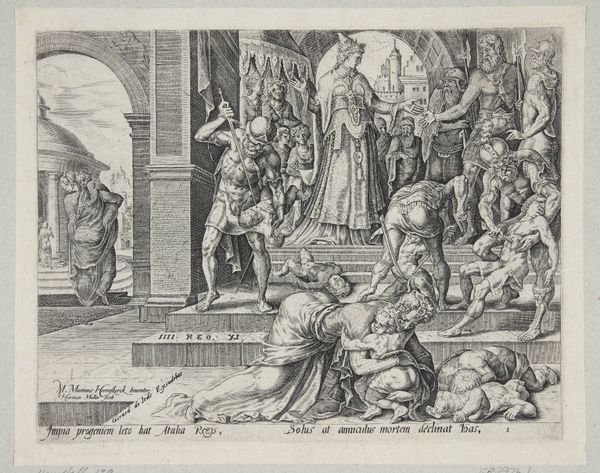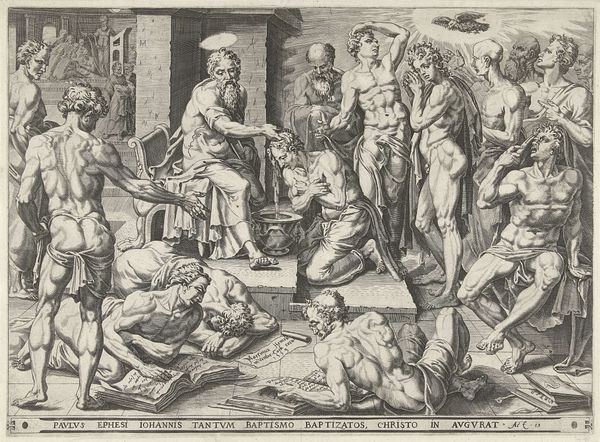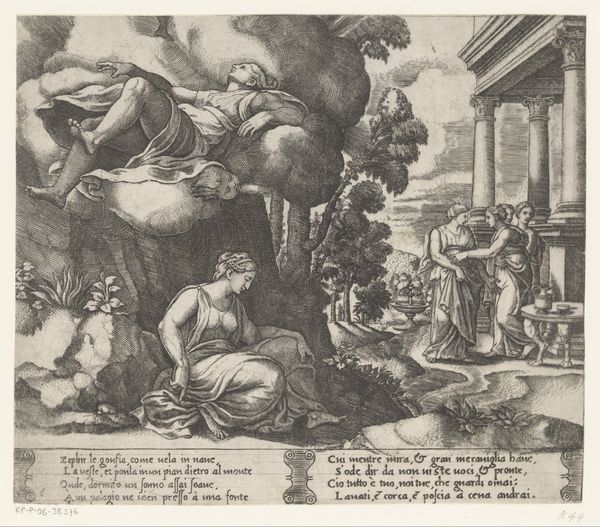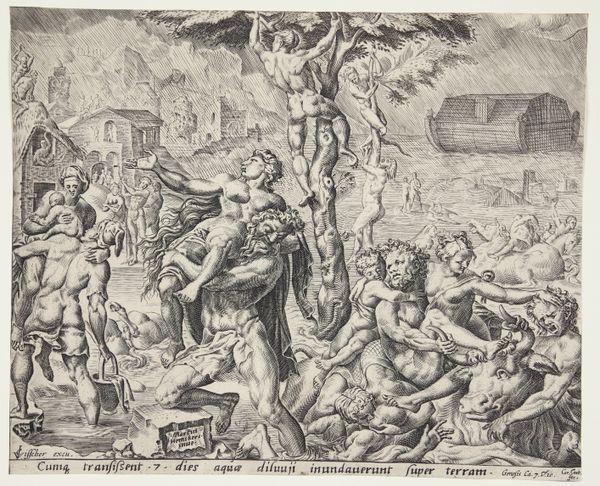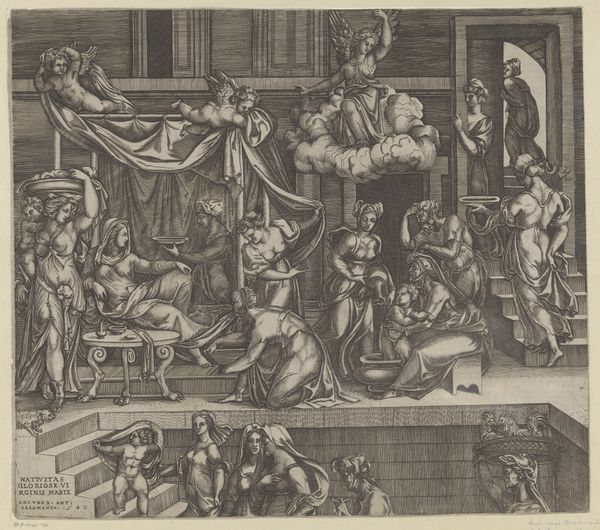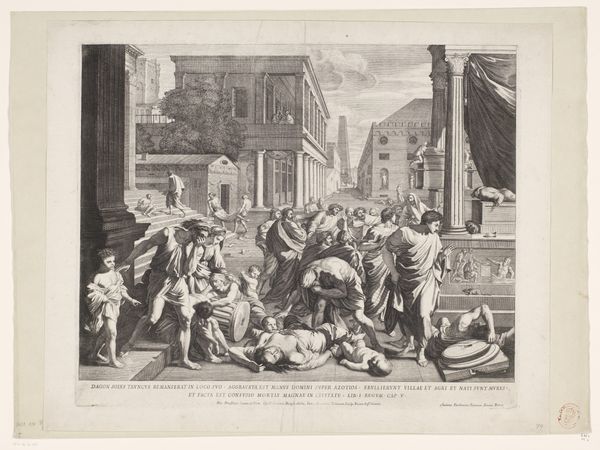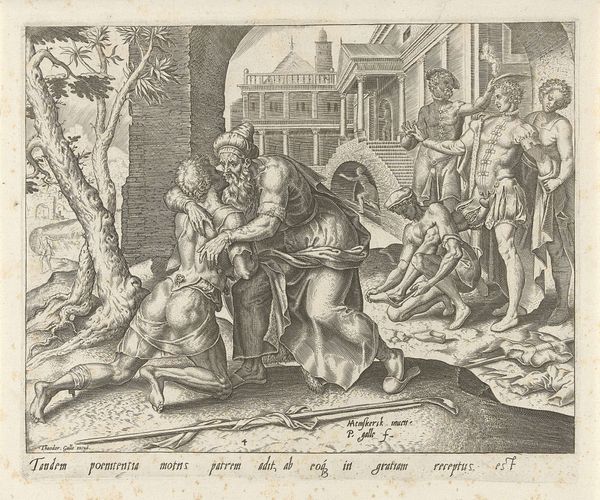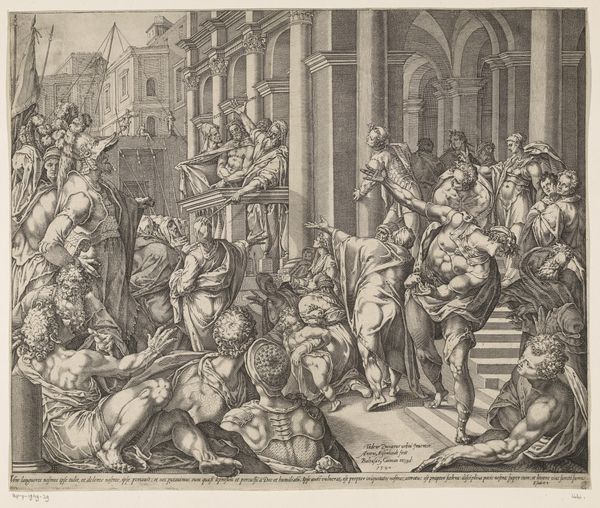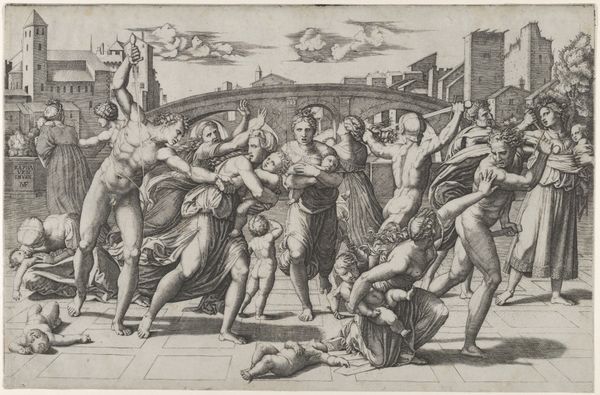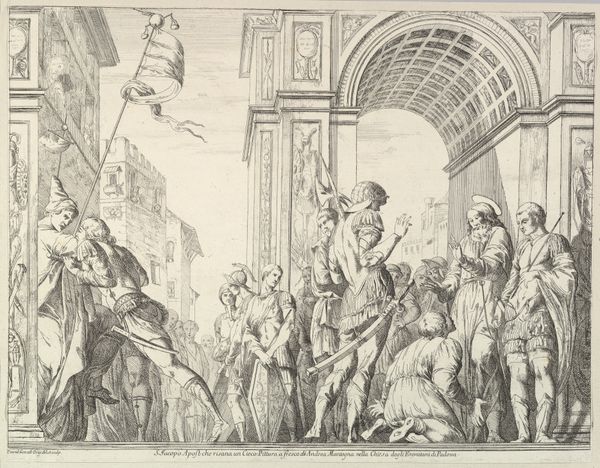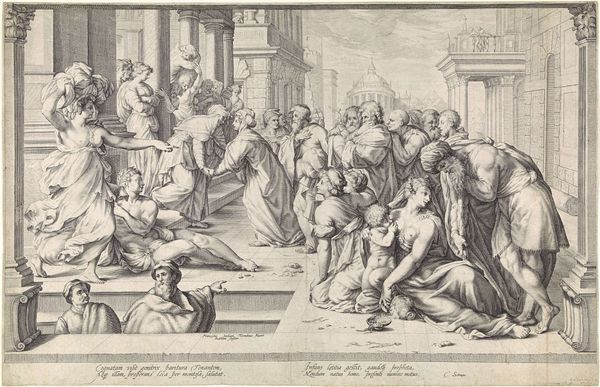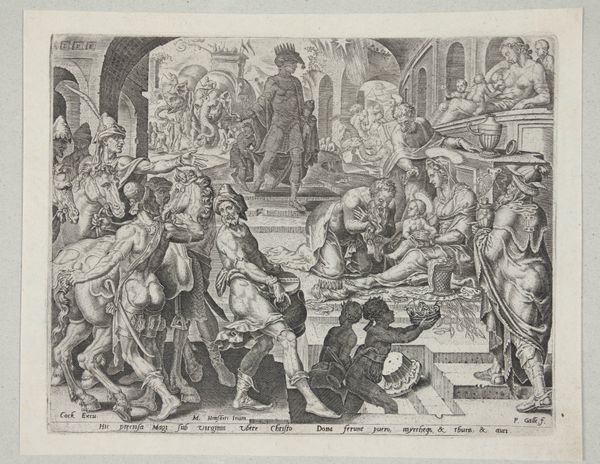
The people of Nineveh repenting upon hearing the prophecies of Jonah 1566
0:00
0:00
print, engraving
#
ink drawing
# print
#
figuration
#
11_renaissance
#
history-painting
#
northern-renaissance
#
engraving
#
realism
Dimensions: 230 mm (height) x 270 mm (width) (monteringsmaal), 209 mm (height) x 248 mm (width) (plademaal)
Curator: Philips Galle’s 1566 engraving, “The people of Nineveh repenting upon hearing the prophecies of Jonah,” depicts a powerful biblical moment. What are your initial thoughts? Editor: The scale is impressive, especially considering it’s an engraving. There’s such a deep sense of remorse communicated through the crowded composition, with figures kneeling and animals looking distraught. It's almost overwhelming in its depiction of collective grief. Curator: Absolutely. Galle places us right in the middle of the scene. Consider how this imagery would resonate in the 16th century, during the Reformation. Repentance, obedience to divine law – these were incredibly loaded themes. Editor: I am intrigued by the portrayal of social hierarchy. You've got the king on his knees, repenting along with the common folk. It's interesting how Galle levels those power dynamics in the face of impending doom. But how might the subjugated be impacted when faced with this moment that erases their concerns and needs to favor those of a more immediate disaster for others. Curator: It’s about collective identity superseding individual status, I think. Consider the political function of imagery during this era. Galle, working within a deeply religious context, presents this universal plea for forgiveness, and for being heard, while also demonstrating an interesting shift that occurs based on new concerns and anxieties. The lines begin to blur within the social order, especially concerning the more vulnerable. Editor: I suppose the narrative of social upheaval implied here should be looked at in both regards, a tool or a signal for something other. To be used for greater means. Perhaps a way to question a deeper meaning between ruler and subjugated? Curator: Perhaps Galle wanted to make the point more about the fragility of societies and civilizations. His artistic decisions really focus the viewers eyes, to show them that what they perceive as normal within their social sphere, can quickly turn and favor either direction. Editor: Ultimately, it shows how history can affect various intersectional narratives. This work really displays more of what meets the eyes when one has to question the how’s, what’s, and why’s. Curator: Indeed. A stark visual reminder of our shared humanity and its often contradictory realities, still impactful centuries later.
Comments
No comments
Be the first to comment and join the conversation on the ultimate creative platform.

